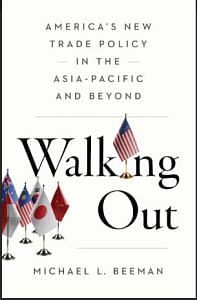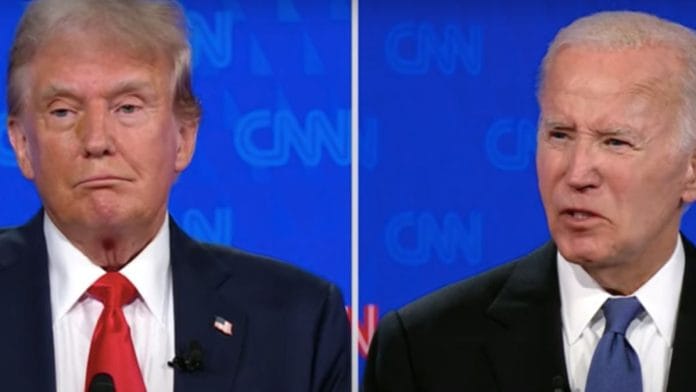On what and whom, exactly, is America walking out? America’s trade agreements, initiatives, and other commitments range from the very general, such as new tariff liberalization and general prohibitions on discriminatory import licenses and fees, to the very specific, such as individual product tariff elimination commitments and rules to ensure international express delivery companies are provided an expedited means for customs clearance at the border.
America’s objectives for these agreements have routinely evolved and changed, be it opening new markets, creating trade rules for leading new growth sectors such as the digital economy, or updating and filling in gaps in previous rules to respond to new conditions in its trade relations and trade flows. As it negotiated to achieve its latest goals, it did so by working within and often building further on these rules. Those core rules and principles, in turn, underpinned thousands of other detailed commitments that America expected from other agreements and deals with individual countries. The primary difficulty in these deals was convincing trading partners to agree to America’s terms, or at least a satisfactory version of them.
Accepting these agreements was rarely problematic for America because the terms overwhelmingly reflected its pre-existing policies and practices, underscoring its unique leverage over the global system.
Since 2017, however, the hallmark of America’s approach has been to directly challenge or ignore—and thus walk out on—many of these same core rules and norms. It has done so in different ways. These include pulling back its own attempts or obstructing other attempts to build on them further to advance them and, thus, reinforce the status quo. More aggressive has been its insistence on changing or securing new terms for these rules by threatening to withdraw from entire agreements— in other words, accept America’s new conditions or else. It has also pursued both external trade objectives and domestic policy objectives by simply ignoring its standing obligations to these rules rather than working within them.
The cumulative significance of these policy shifts has been to profoundly shake the trading system, one that America, after 75 years, no longer prioritizes remaining tethered to. Instead, America has consciously disassociated itself from and openly questioned the wisdom and efficacy of many of the rules and norms it helped create for itself and the world. One potent response is that since other countries sometimes have acted less constrained by the need to prioritize or follow these rules and norms, America is similarly justified in detaching itself from them, with little inhibition or restraint, to pursue and protect its interests. While the former point is certainly true, legions of American officials and members of Congress have aggressively mounted challenges, formed alliances, and used other leverage to push back on these trading partners while maintaining the belief that fundamentally undermining the rules and norms to do so would itself be a disservice to America’s interests.
Thus, the central question is not whether America is justified in asserting its trade interests—it has always done so. Instead, it is why and how America’s decision-makers today have redefined those interests and come to make sharply different choices about how to advance them. They have done so by turning away from the postwar rules-based trading system, profoundly impacting its future viability and stability.
This book aims to explore these and other fundamental changes in greater detail. It begins by framing the choices America made to separate itself from the core rules and norms underpinning the international trading system before looking at the impact of America’s new policy in its trading relations across the Asia-Pacific region.
To provide context, I outline four fundamental elements of the international trading system that the United States played a leading role in creating in 1947 and continued to shape decades after, set against decisions made starting in 2017 that have undermined that very system. The Biden administration and the U.S. Congress walked out on the first core element of the international system, the “open trade” norm of advancing ever-more liberalized trade.
While America has at times wavered in its commitment to this norm, it has routinely still engaged with other countries, collectively or individually, to advance successive negotiations to cut tariffs and remove other barriers to trade. Since coming to office, the Biden administration has turned down all opportunities and proposals to join new reciprocal tariff-cutting negotiations, along with placing a much lower priority on efforts to remove non-tariff barriers to American exports in pursuit of other objectives.
Similarly, since 2015, the U.S. Congress has failed to approve any agreement or pass legislation to further open America’s market to anything other than only token new access. In fact, by failing to act for over three years to renew limited, conditional programs providing tariff breaks on certain imports, including one program supporting mutually beneficial trade with the world’s developing countries, it has effectively only moved in the opposite direction by curtailing access. The Trump administration walked out on the second core element, the principle of most-favored-nation treatment.
Sometimes referred to as the reciprocity principle, this obligation in the rules requires each system member to provide the same terms of access to its market as it provides to all other system members. For goods and services, each country designs its own liberalization “package” to negotiate with other members that do the same, allowing each to maintain greater control over which sectors it liberalizes over others. Once trade-offs are made and these packages are agreed upon through negotiation, each must, in turn, provide its access package to all members of the system.
While a limited number of important (and sometimes quite significant) exceptions can be used, the goal is to prevent countries from later offering better terms to some than they do to others. The Trump administration flouted this core principle of non-discrimination by first threatening and following through with large, unilateral tariff increases against multiple countries. This included large tariff hikes directed at specific partners, such as China, as well as against global exporters of steel and aluminium. These tariffs, widely viewed as violating the international trade rules, have been kept in place by two U.S. administrations.
The Biden administration and the U.S. Congress walked out on the third core principle, called national treatment, which requires members to provide equitable treatment for imported and domestic products and services. The goal of this principle, sometimes called the level playing field rule, is to prevent countries from erecting discriminatory barriers through laws, regulations, or other practices aimed at putting imports at a disadvantage vis-à-vis their domestic producers. Because of the complexity of the barriers countries can use to discriminate or disadvantage, scores of additional rules were subsequently developed to cover more specific situations. Some of these cut across the economy, such as minimum standards for government regulatory transparency or rules on anti-corruption. Others were targeted to establish a level playing field for foreign exporters and firms in narrow industry sectors, whether for financial services or agricultural goods.
When the U.S. Congress approved and President Biden signed a new law in 2022 establishing billions of dollars of U.S. government-funded consumer subsidies for the purchase of electric cars, they willfully ignored this fundamental core principle of non-discrimination. The program was opened for American-made goods to qualify, but then tight limits were set on the other countries from which cars and some of their components could be sourced and still qualify.
The Trump administration walked out on the fourth element, which is to provide a dispute resolution mechanism to enable system members to hold each other accountable to their obligations. The mechanism has evolved over the years, but the fundamental approach remains unchanged—a member that alleges another is violating a trade rule can file a claim that is then reviewed by a panel of experts. If the plaintiff succeeds in its claim, it is authorized to take action, most often to raise its tariffs proportionally against the other member until it ends that practice. The Trump administration exploited a loophole to break this trade dispute resolution mechanism and then made it clear that it was perfectly comfortable to leave it unfixed.
In practical terms, breaking it for the world also allowed the Trump administration to ignore, more easily and at will, America’s own trade commitments. The Biden administration, only after much delay, finally committed to work with other members to explore a compromise to make this mechanism functional again, but it continued to insist that it would only do so if fundamentally reformed. As of the publication of this book, whether such a compromise can be reached to make it functional once again remains unclear and the focus of much concern.
 This excerpt from Michael L Beeman’s ‘Walking Out: America’s New Trade Policy in the Asia Pacific and Beyond’, has been published with permission from Stanford University Press. The title has been published by the Walter H. Shorenstein Asia-Pacific Research Center and distributed by SUP.
This excerpt from Michael L Beeman’s ‘Walking Out: America’s New Trade Policy in the Asia Pacific and Beyond’, has been published with permission from Stanford University Press. The title has been published by the Walter H. Shorenstein Asia-Pacific Research Center and distributed by SUP.






